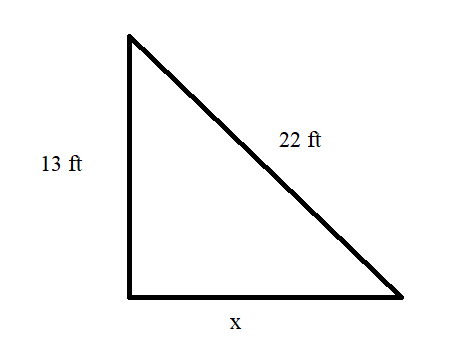Solve for w in the equation below.

w=rxy+z
w=(x/ry)+(z/r)
w=y(z+rx)
w=(x/ry)-(z/r)
Correct Answer : D
We are asked to make w the subject of the formula.
First, we rearrange the equation by to ensure w is on the right hand of the equation.

Then, divide both sides by r

Multiply both sides by y

The above equation can be rearranged into

Thus, the formula for finding the value of w is (x/ry)-(z/r).
TEAS 7 Exam Quiz Bank
HESI A2 Exam Quiz Bank
Find More Questions 📚
Teas 7 Questions: We got the latest updated TEAS 7 questions
100% Money Refund: 100% money back guarantee if you take our full
assessment pass with 80% and fail the actual exam.
Live Tutoring: Fully customized live tutoring lessons.
Guaranteed A Grade: All students who use our services pass with 90%
guarantee.
Related Questions
Correct Answer is D
Explanation
To find the greatest number from the given options, convert the decimal numbers into fractions.
6.25 becomes 625/100
7.4 becomes 74/10
The LCM for the denominators of 8, 100, 7, and 10 is 2800. Now we can multiply each fraction with the LCM.
3/8*2800=1050
625/100*2800=17500
10/7*2800=4000
74/10*2800=20720
The fraction 7.4is the greatest of all.
Correct Answer is B
Explanation
The median of a data set is determined by arranging the numbers in ascending orders, and the median is the number the falls in the middle position.
-7, -4, 1, 3, 9
There are five numbers in the data set, and the median falls in the third position from either side. Thus, 1 fall in the third position.
Correct Answer is C
Explanation
we use the relation 1 L=1000 mL to convert 3.9 L to mL as follows.

Thus, 3.9 L is 3900 mL.
Correct Answer is A
Explanation
The perimeter of a shape is the sum of the lengths of all its sides.
Given Trapezoid:
- Top side: 10 cm
- Bottom side: 16 cm
- Left slant side: 5 cm
- Right slant side: 5 cm
Calculate the Perimeter:
10+16+5+5=36cm
Correct Answer is D
Explanation
we use the calculator to determine the positive square root of 20, which is then multiplied by 20.
Using the calculator,

Multiplying the square root above with 5 becomes

The approximate value is 26.9.
Correct Answer is D
Explanation
Let the unknown length of the x. The resulting rectangle is shown below.

Then, we apply the Pythagoras theorem to find the value of x as:

The value of the unknown length is approximately 17.7 feet.
Correct Answer is D
Explanation
The final price of the stock on Thursday can be found by finding the price on the previous day taking into account the price changes as follows.
The price of the stock on Monday was $33.65
On Tuesday the price of the stock went up by $1.23 from Monday’s price. Then, Tuesday’s price was $(33.65+1.23)=$34.88
The price of the stock on Wednesday decreased by $0.97 from Tuesday’s price. The price on Wednesday became $(34.88-0.97)=$33.91
Thursday’s price increased by $2.75 from Wednesday’s price, which was $(33.91+2.75)=$36.66
Therefore, the final price of the stock on Thursday was $36.66.
Correct Answer is D
Explanation
The range is a simple measure of statistical dispersion that shows the spread between the highest and lowest values in a data set.
Formula for Range:
Range=MaximumValue−MinimumValue
Example Calculation:
From the given box plot:
Identify the maximum value: 92
- Identify the minimum value: 12
- Subtract the minimum from the maximum: 92−12=80
Thus, the range of this data set is 80.
Correct Answer is A
Explanation
To estimate the total amount, round each price to the nearest dollar:
- Hat: $19.49 → $19 (since 0.49 rounds down)
- Shirt: $21.49 → $21 (since 0.49 rounds down)
- Shoes: $59.99 → $60 (since 0.99 rounds up)
Now, add the rounded values:
19+21+60=10019 + 21 + 60 = 10019+21+60=100
Correct Answer is B
Explanation
In this problem, we need to compare the number of dimes to quarters.
If we let p be number of pennies in the bottle. Then,
Number of quarters in the bottle = 6p
Number of nickels in the bottle = 2p
Number of dimes in the bottle =5(2p)=10p
Now relating dimes to nickels, we have

Thus, there are 5 times as many dimes as quarters in the box.
This question was extracted from the actual TEAS Exam. Ace your TEAS exam with the actual TEAS 7 questions, Start your journey with us today
Visit Naxlex, the Most Trusted TEAS TEST Platform With Guaranteed Pass of 90%.
Money back guarantee if you use our service and fail the actual exam. Option of personalised live tutor on your area of weakness.
